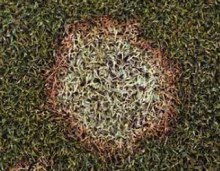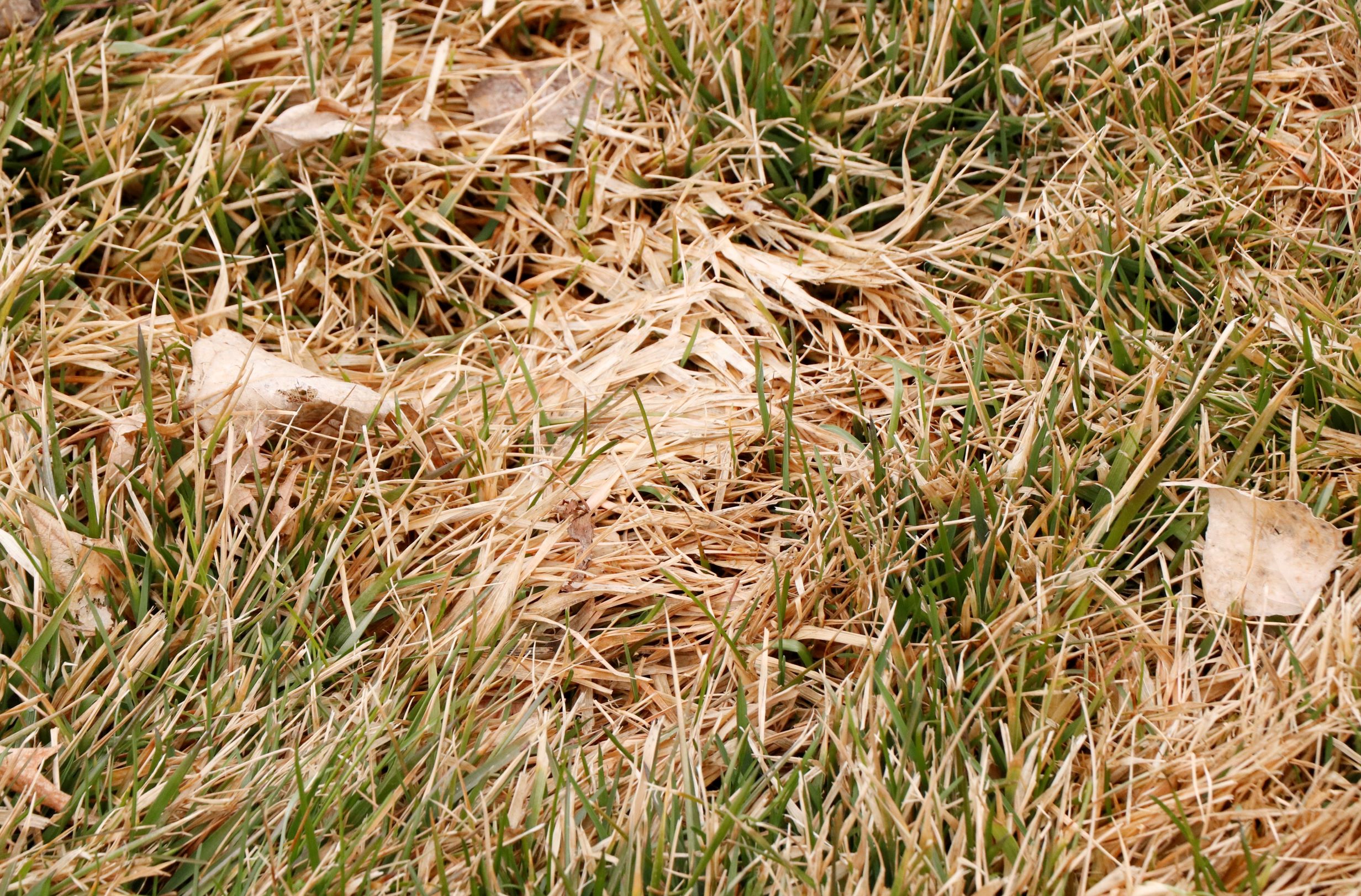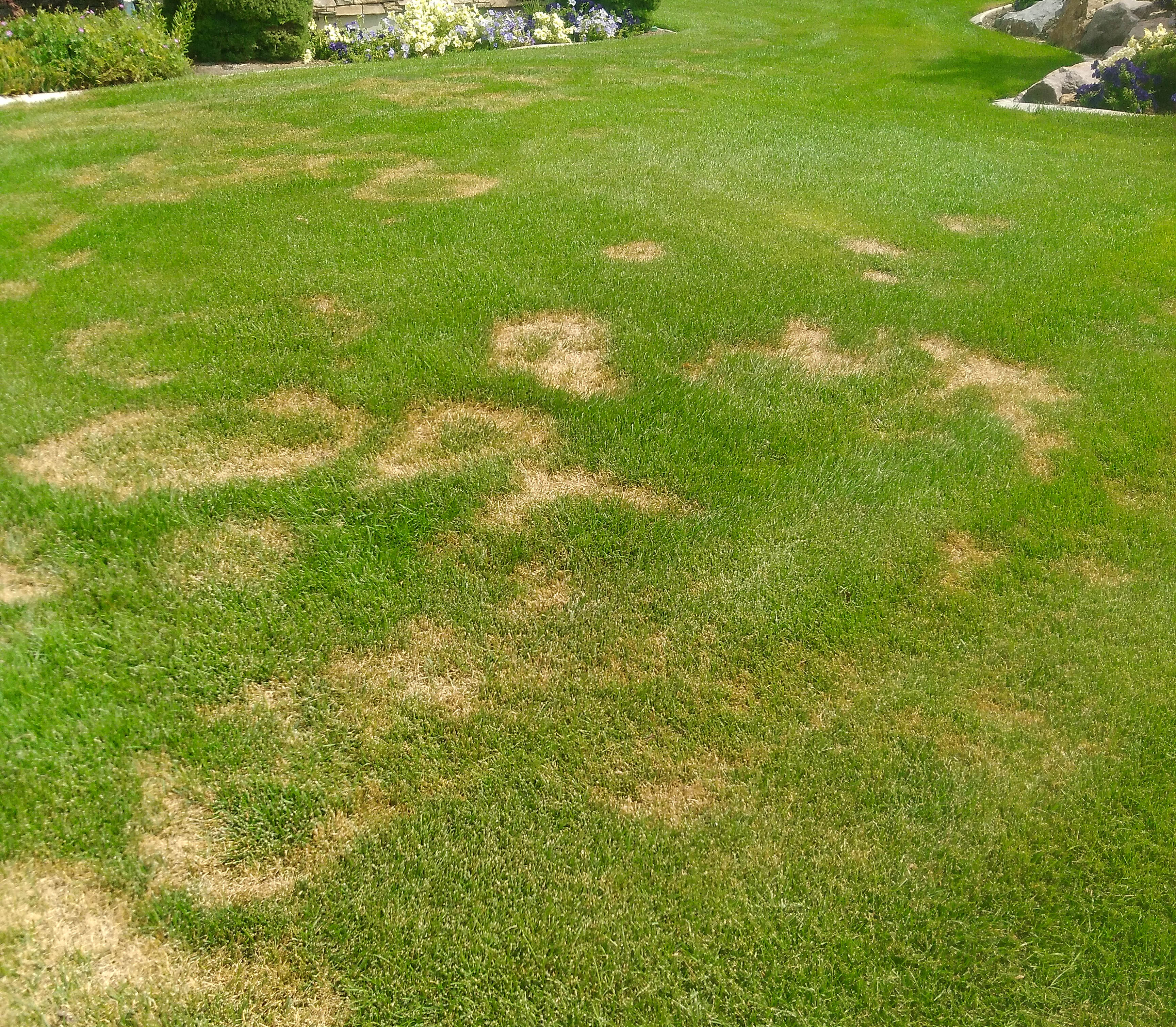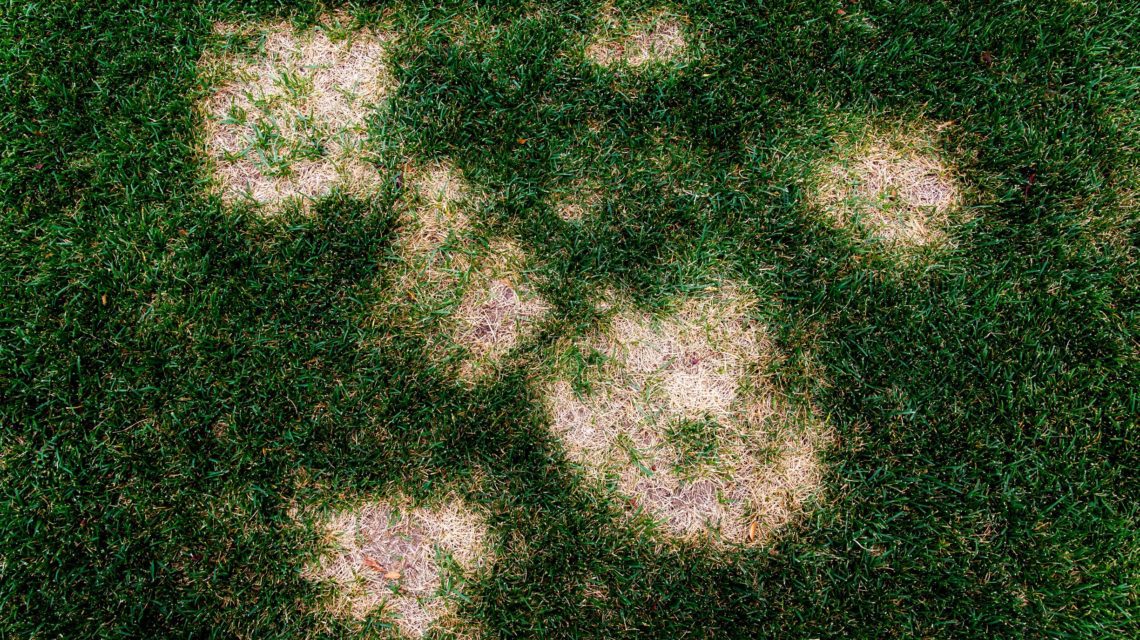Most people look forward to what springtime brings: sunshine, flowers, etc. Lawn care, on the other hand, might be a source of stress and frustration this spring—especially if your lawn develops a nasty disease over the winter. Some lawn diseases you’re probably seeing right now in Utah include snow molds, necrotic ring, and ascochyta. You’ll learn how to treat (and prevent) these common Utah lawn diseases in this post.
Skip to a section:
Pink Snow Mold


Pink snow mold creates circular dead patches on your lawn with pink, cobweb-like growths on the edges of the infected areas. Sometimes the fungus creates a fuzzy-looking film on top of the grass. Pink snow mold usually appears in early spring in places on your lawn where snow has lingered and created wet, spongey patches.
However, because pink snow mold can survive in temperatures ranging from 30°F to 60°F, it doesn’t need snowy conditions to thrive. As a result, pink snow mold may show on your lawn in fall, winter, or early spring.
The fungus usually grows during long periods of cool, wet conditions. Pink snow mold is generally only seen near the mountain bench areas in Utah because of the higher altitude and shade.
Pink snow mold can be controlled through the following:
- Rake leaves well in fall before mowing
- Rake snow mold-infected areas in spring
- Aerate the lawn to refresh the soil
- Avoid piling snow on one part of the lawn in winter
- Reduce shade in the affected area
- Avoid applying a lot of nitrogen fertilizer to affected areas
- Remove snow from the lawn as soon as possible in spring
Because pink snow mold needs wet, cool conditions to survive, usually affected areas shrink in the summer. However, the fungus can cause more permanent damage to your lawn if steps aren’t taken to control and prevent it.
Gray Snow Mold


Gray and pink snow molds both create fuzzy, circular spots on grass and are usually seen in the mountain bench areas of Utah. One difference between them is small hard growths may develop within circles of gray snow mold, but not pink.
Gray snow mold fungus usually thrives underneath the snow layer or on matted, wet grass that was covered by a heavy layer of snow for an extended period of time. Gray snow mold generally appears on Utah lawns in places where snow was piled in the winter (usually near the edge of driveways).
To prevent your lawn from developing snow mold, do the following:
- Break up snow piles left from winter
- Rake matted grass and piles of leaves
- Spray your lawn with a fungicide about one month before winter snowfall
- Mow your lawn to the correct length
If your lawn has already been damaged by gray snow mold, you can try to repair it by aerating and overseeding in spring.
Necrotic Ring


Necrotic Ring Spot is another common fungus that affects Utah lawns. Necrotic Ring appears as circles of dead grass in the lawn. The middle of the circle remains green at first while the outer edge of the circle turns brown or yellow. Eventually, the center of the circle may also turn yellow and die.
Necrotic Ring fungus lives in the soil under the grass, so treating it can be difficult. The symptoms of the fungus can be disguised through strengthening the root zone of your grass:
- Perform core aeration in spring or fall
- Water your lawn properly
- Use a balanced nitrogen fertilizer
- Keep lawn about 3 inches long
With consistent effort to strengthen grassroots, necrotic ring fungus will eventually dissipate. However, it could take around 2–3 years to finally eliminate the fungus from the soil.
Ascochyta


Lawns that are affected by ascochyta appear to have splotchy dry areas across the grass. Ascochyta often looks similar to lawns suffering from drought conditions. It causes the lawn to turn yellow from the tip to partway down the grass blades, but the grass underneath usually remains unaffected.
As a result, ascochyta usually only shows on the lawn for 2–3 weeks before fading (depending on the weather).
Ascochyta is difficult to kill with a fungicide, so most people simply wait for the disease to dissipate after a few weeks. The following tips will help alleviate the disease:
- Aerate your lawn yearly
- Keep your lawn at 2.5–3 inches (or longer)
- Mow less frequently when you see the disease to avoid spreading it
- Only mow when the lawn is dry, not wet
- Use less nitrogen fertilizer (especially in the spring)
Utah homeowners generally see ascochyta on their grass when very hot, dry weather immediately follows cool, rainy conditions. Keep your lawn properly watered, mowed, and fertilized to prevent damage from ascochyta during the weather conditions described.
Are you seeing one of these lawn diseases in your grass? Call or text 801-226-2261 today to talk with one of our specialists about how to fix it and to get a free service quote!



